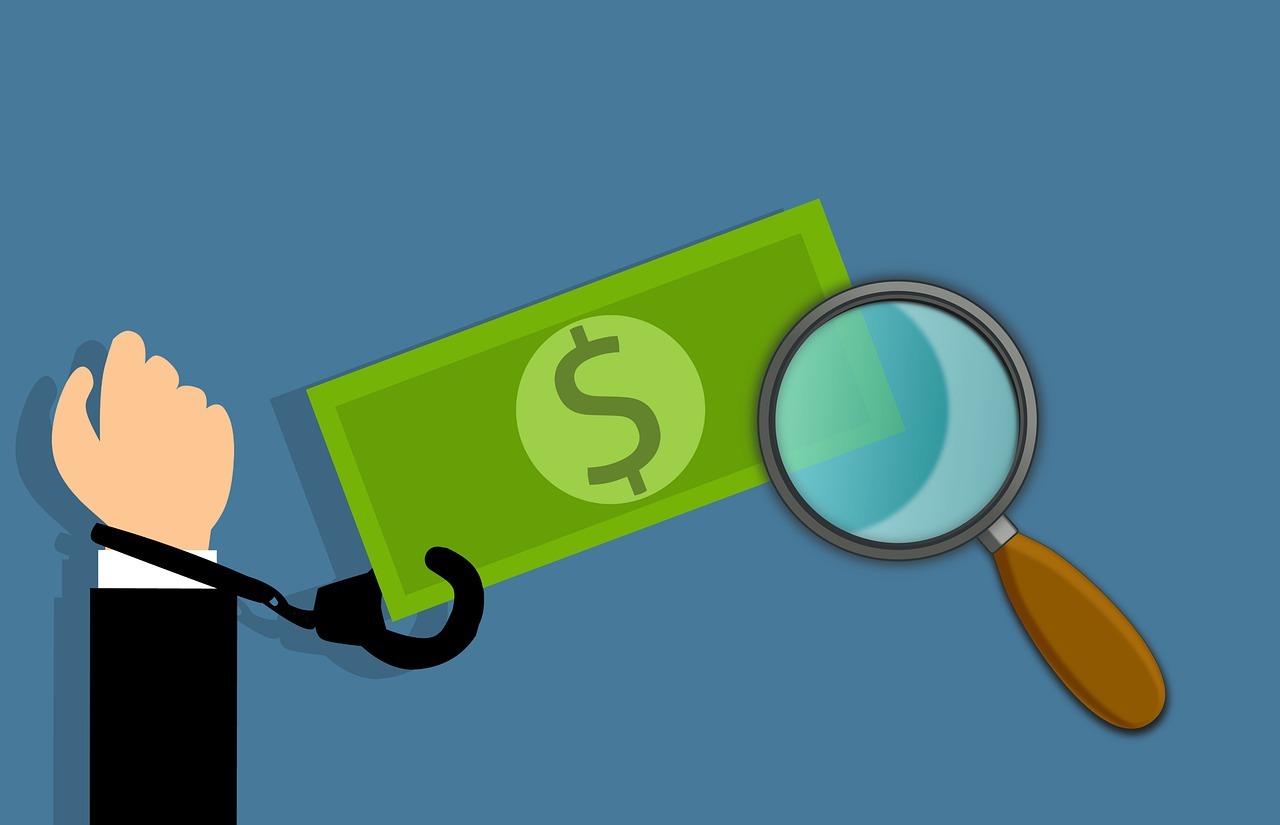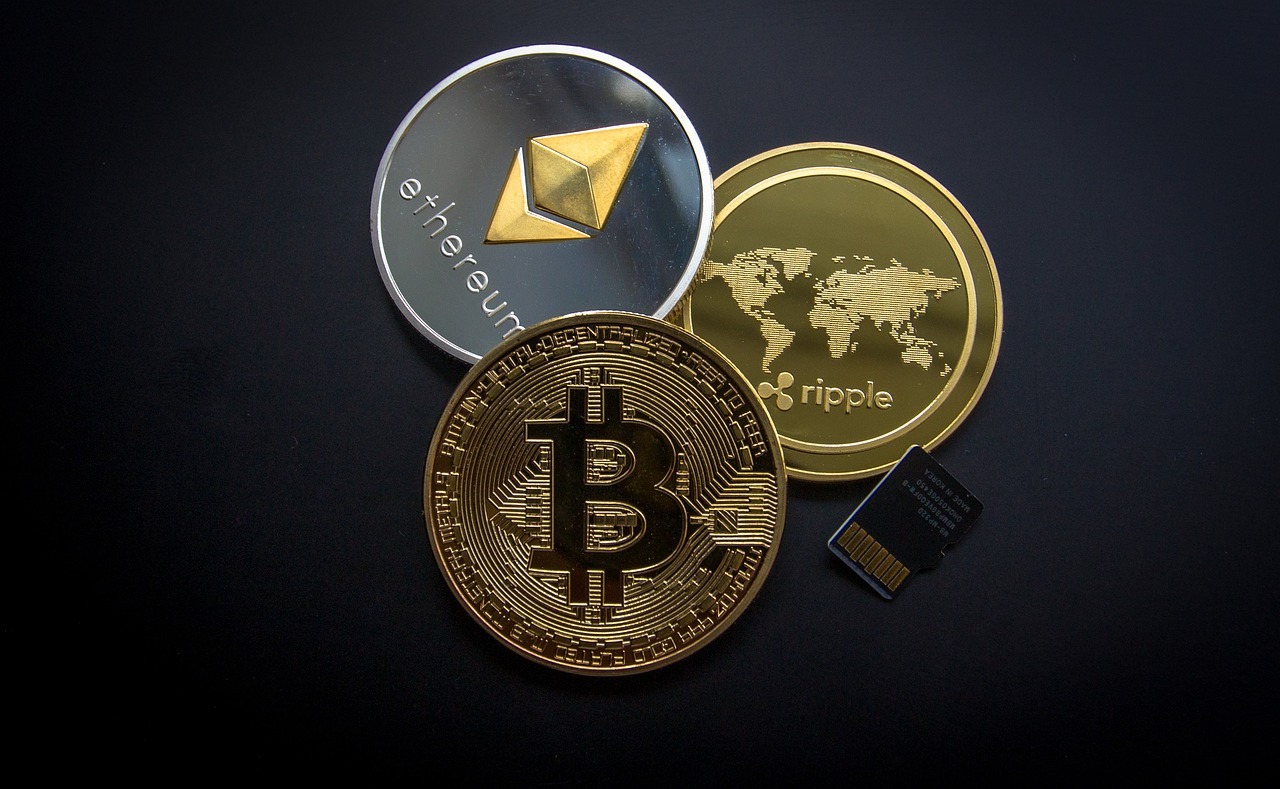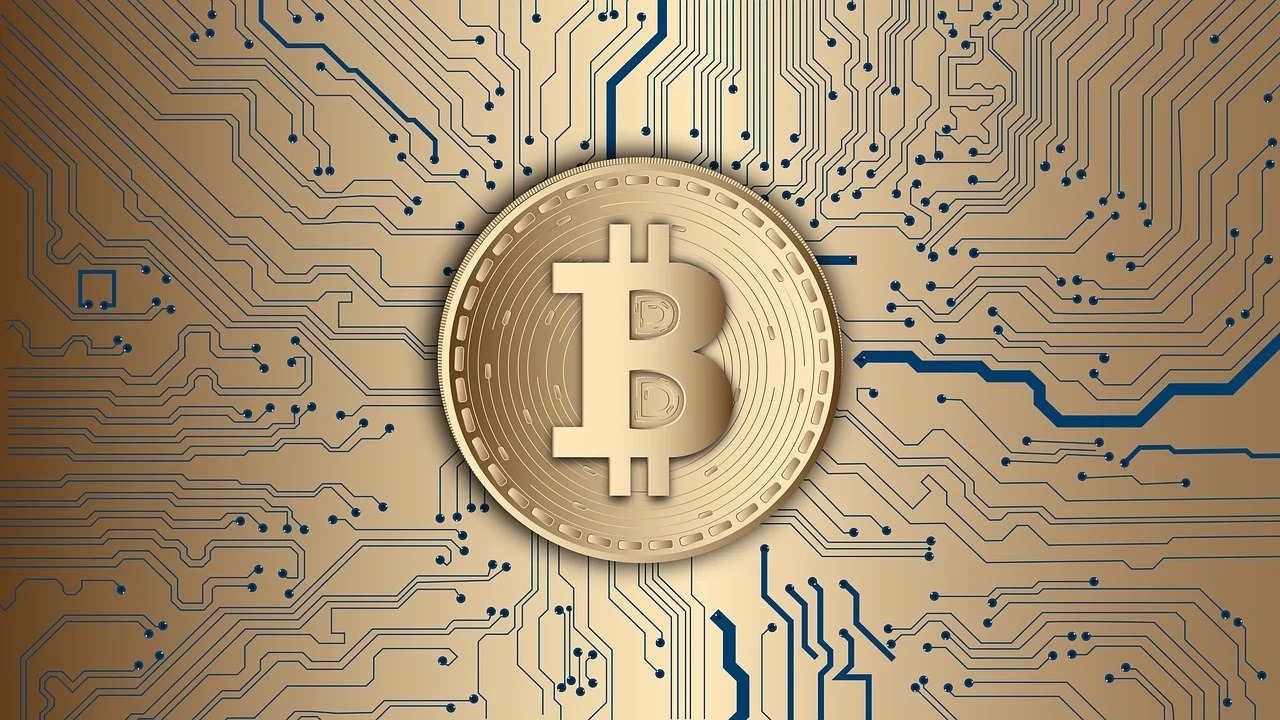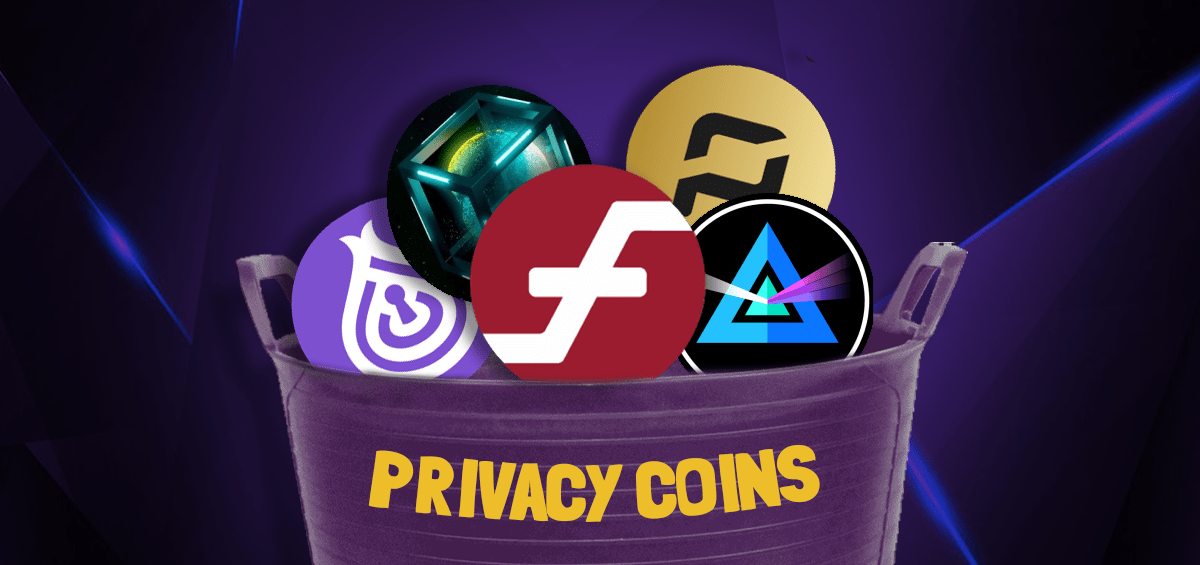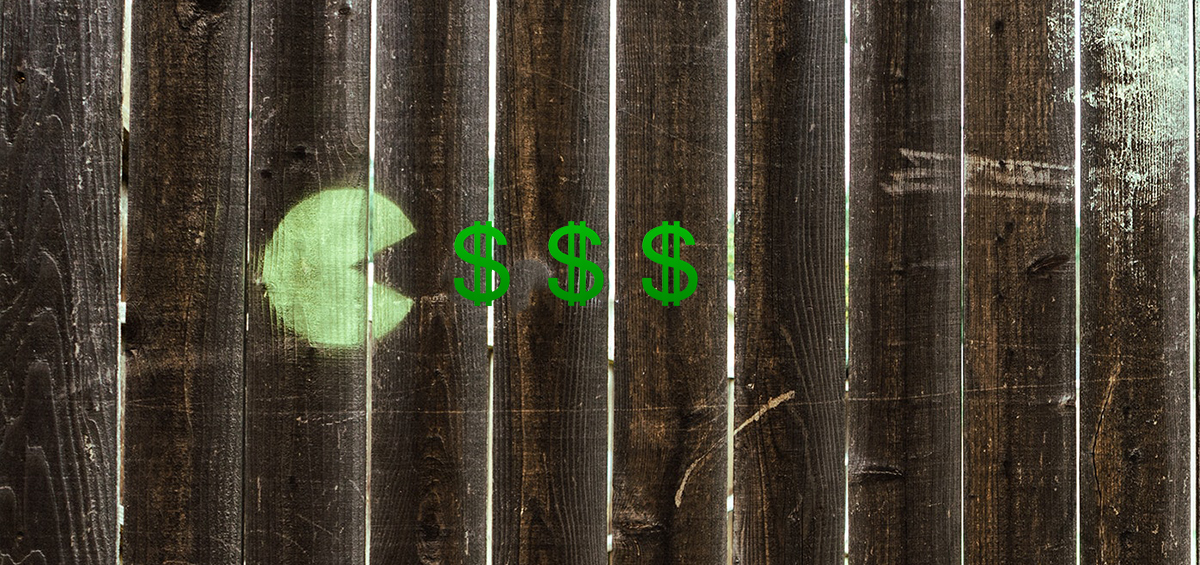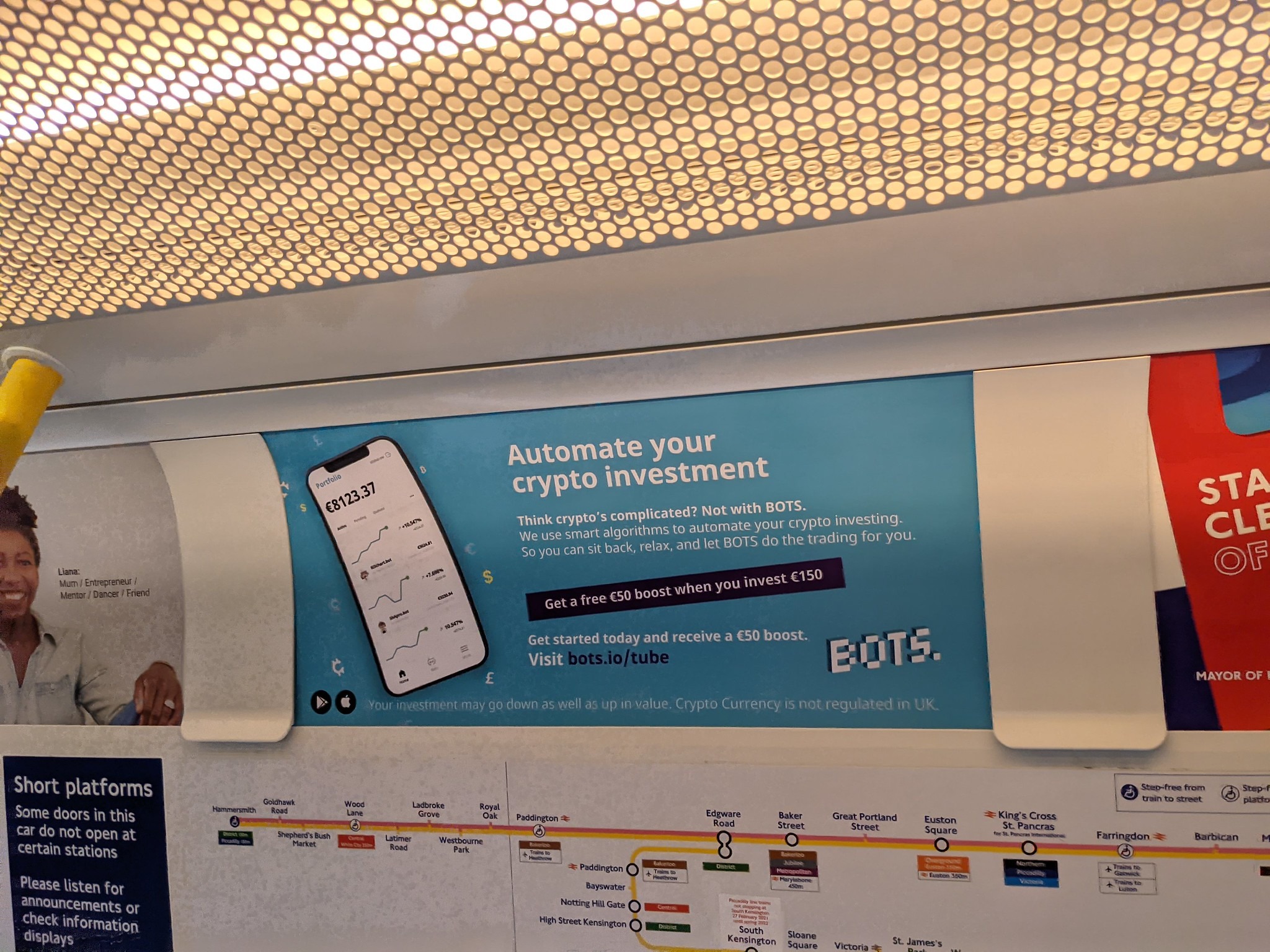Last time, we gave you a good rundown of what you could expect from NFTs, as the fledgling tech vacillates between price speculation and progress. You’ve probably read enough about NFTs to know what they are – paintings, 3D images, videos, short clips, or just about anything that can have a digital identity. From our previous piece on the subject, you have an inkling of what NFTs could be; transcending the boundaries of digital ownership and having a tangible piece of art sitting on an immutable ledger is a neat idea, but ideas don’t pay rent. This time, we’re getting into the practicality of how to NFT and cover exactly what goes into ‘minting’ NFTs, and briefly discuss the considerations that shape this process.
First off, some categorization – this piece is aimed at what we’d call the retail market. If you’re a creative working on your own, with your own projects and social media presence, this is ideal for you. If you’re just trying to understand the basics to get started, this will do you fine. However, a short post such as this can’t adequately cover the design and architectural complexities that go into launching entire projects, asset databases or institutional programs through NFTs. If you fall in those latter categories, write to us here, and we’d be happy to guide you. It’s what we do here.
Getting Started
So, you’re an artist and you’ve seen people talking about NFTs, and may have even come across the instas selling their own. If you reached out to your early adopter blockchain friends, they might have spouted barely intelligible jargon about minting your own smart contract and fungible asset on the blockchain and transaction fees and 2FA authorisation. If you’ve gone a step further, you might have come across the popular platforms making this process easier for creators like you, like Rarible or Opensea. But even these can be intimidating when they talk about gas fees, metamask wallets and tokenized royalty programming. It’s bad enough that you don’t fully grasp this emerging technology, but do they also have to induce decision paralysis by a thousand cuts?
Well, they kind of do have to. This sucks, but is an inevitable result of working with cutting edge tech. It just hasn’t been nicely packaged into consumer-friendly apps that make it as easy as uploading a picture with a filter. But this lack of usability is exactly where your advantage lies. And once you have a better understanding of these barriers to entry, you’ll find yourself on the other side of them.
Let’s unwrap the primary considerations when you decide to mint your NFT:
- Should you use an NFT marketplace to mint and distribute your assets?
This is the easy one. You probably should. Using one of the marketplaces, especially the big ones, means you will end up paying some fee, either in Ethereum, or in one of the native tokens governing the usage of the platform. But what you gain instead is distribution and exposure. Being featured on these platforms means a level of discoverability unparalleled by your current social media presence. Your work is instantly available to anyone, anywhere in the world. If you can build up hype using your own social media, all the better. And once you decide you’re using one of these marketplaces, the obvious next question is
- Which one?
You’re spoilt for choice, but each choice comes with pros and cons. Rather than recommend a platform as one-size-fits-all, let’s go based on what your priorities are.
First, do you care about where your minted NFT sits? Does the decentralized promise of the blockchain matter a lot to you, and do you want to ensure that the NFT is hosted on a blockchain itself? If so, the standout choice is KnownOrigin, where all the NFTs sit on the IPFS system – which means those scary articles about disappearing NFTs shouldn’t be a concern to you.
If the blockchain-ness of the NFT isn’t of primary concern, but you care about quality, you probably don’t want to be on the marketplaces that are free-for-all and allow just about anyone to sign up. Of course, the exclusivity means you need to wait to become an approved artist on the website, but the upside is being part of that exclusive elite. If this idea appeals to you, apply to join the program at SuperRare.
Let’s say neither of these factors matters much to you. You only want to be discovered. It doesn’t matter what the competition is, because you’re sure your art will set you apart, and you will be discovered. Go with OpenSea, the biggest marketplace by volume, where the sheer exposure outweighs other concerns. OpenSea also has one of the older, more established programs for minting NFTs without paying fees, so, it might be worth a shot.
But let’s say you’ve also heard about how blockchains make things decentralized and you’ve heard there are tokens used by platforms that allow NFT creators a degree of governance and participation in shaping the platform. And let’s say this is just as important to you as discovery, art and profit. Look no further than Rarible.
If all of these are just niggling worries, and what you really care about is using something robust and time-tested, and you want a platform that has refined its usability and user-friendliness over the years (especially something that wasn’t launched just a couple months back), check out the Enjin Marketplace. Enjin is the OG when it comes to collectibles and NFTs, and is probably the most established of the lot, even though its focus is on collectibles for games.
Now that you’ve selected a platform, there’s a good chance those old buzzwords Gas Fee and Metamask are back in your field of vision. This brings about the next question:
- Should you shun wallets altogether and just avoid the platforms that require gas fee and Metamask wallets?
No. Even if the platform you’ve chosen lets you mint NFTs without any gas fee or payments, it’s essential that you understand these things before getting started. After all, when it’s time to sell your artwork and get paid, you’d need to know what you’re dealing with.
Gas fees or transaction fees are the fees paid to a network like the Ethereum blockchain for registering your asset on it and having an immutable record of its creation and ownership. As annoying as it may be, this is the core of what an NFT is: a permanent, unalterable note on the blockchain tracking the issuance and history of your newly minted artwork. The gas fee on the Ethereum network varies day to day, depending on how many people are transacting on it at a time. So, it could be as low as $0.1 on some days and shoot up past $30 on others. The platform you mint the NFT on will recommend gas fee levels – to keep it simple, just go with the default settings.
Metamask is an account management service that is designed to keep your funds safe and link them to these platforms and marketplaces as required. But the best way to look at it is to forget that sentence. Its easiest implementation is as an extension that you can add to whatever browser you currently use – just remember to keep your login credentials secure. It’s just something you add to the browser, set up, and summon whenever you need to set up an account at a new NFT portal.
Each of these platforms we’ve mentioned above comes with its own startup guide, although most of them require barely more than a signup. Which means creating an NFT once you’re done with this post should take you about 2 minutes. That’s about how long it took us to create this: https://opensea.io/assets/0x495f947276749ce646f68ac8c248420045cb7b5e/45166745550180379997281034299760509787444993591479914455060127570851312697345
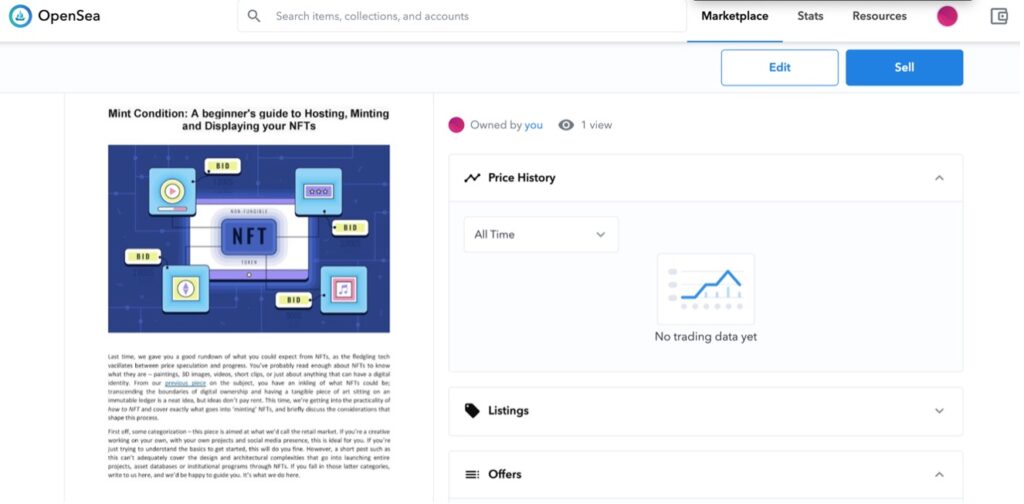
(That’s right. We just turned this article into an NFT to remind you that literally anything can be minted as an NFT, however silly that sounds.)
- So, you just made an NFT. Now what?
This is a question where only a part of the answer can come from us. If you’re thinking about displaying and publicity, there’s a good chance the platform you’ve used has taken care of that for you. You probably don’t need to do anything extra to put it out there. Maybe share it on your insta.
If you’ve travelled with us on this journey and minted something, you’re probably feeling accomplished (you just used cutting edge tech! Good job!) and also a little… let down? The entire process took just a few minutes. All this hype couldn’t be for a few minutes of work, could it?
Are NFTs just a new way to display art? Does your participation end with creating something on a website and setting up a wallet? That seems a little reductive, doesn’t it? So, what could an NFT be if it’s to be more than just a jpg on a website? What could an NFT be if it’s to matter to somebody living outside the blockchain bubble? Or, to put it another way:
- What can NFTs do to be relevant in a confusing world that just seems to use these as throwaway speculative instruments?
What if NFTs could live up to their potential as fully owned online galleries? What if creators and facilitators could come together to manifest a kind of digital Louvre to display and sell your works? And what if all of this economic activity could also be corralled and put to effective use, especially in a time of need?
What if, all else aside, we told you we had some answers, by way of demonstration, for the above?
Stay tuned for our next post.
Guest authored by Pramod Emjay. Pramod is a Fintech Consultant and Blockchain Architect.
Reach out to us at contact@ikigailaw.com if you are launching an NFT product. We would love to have a chat.




